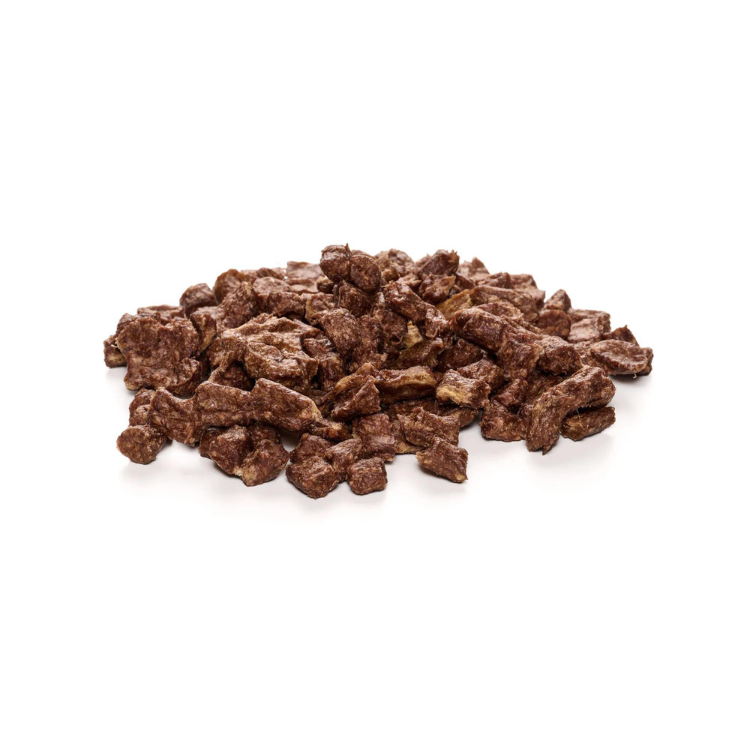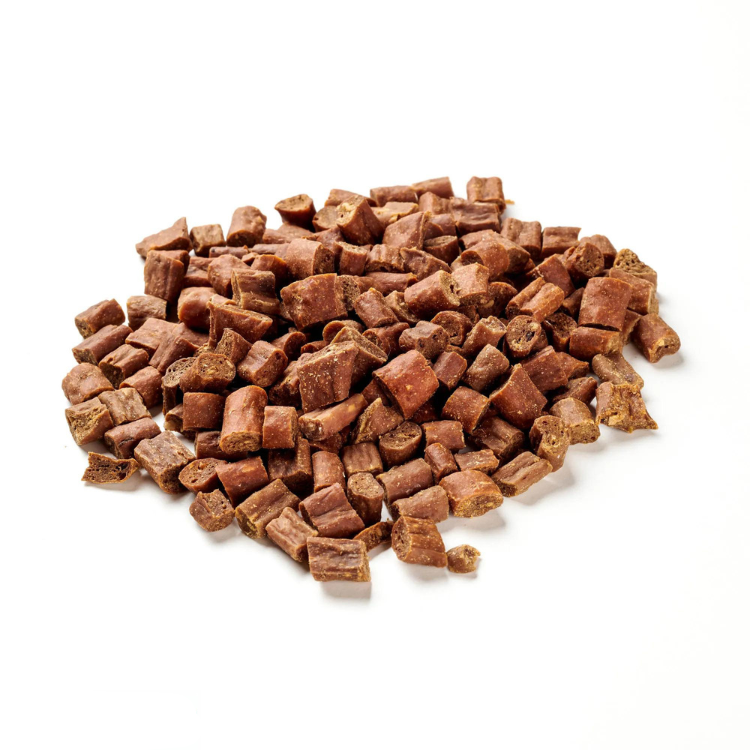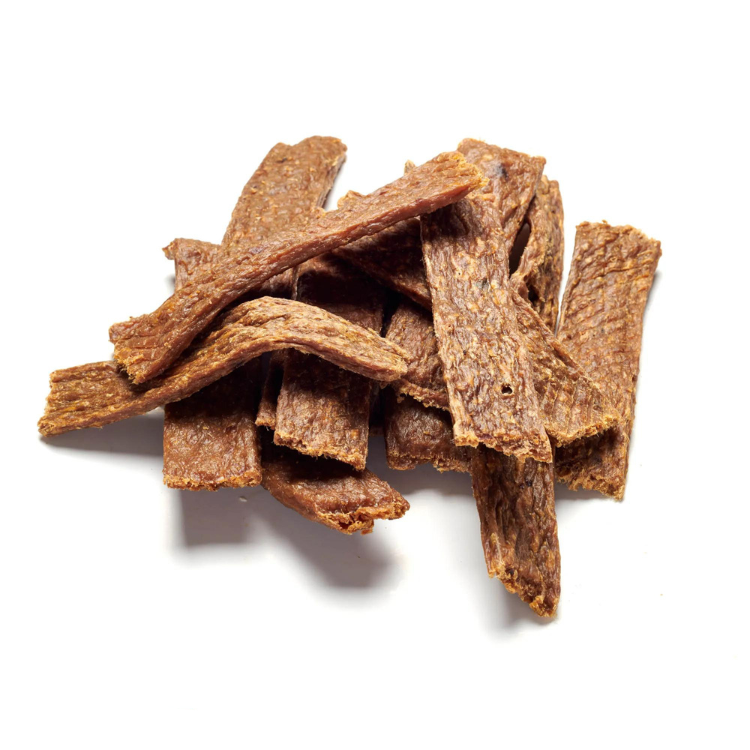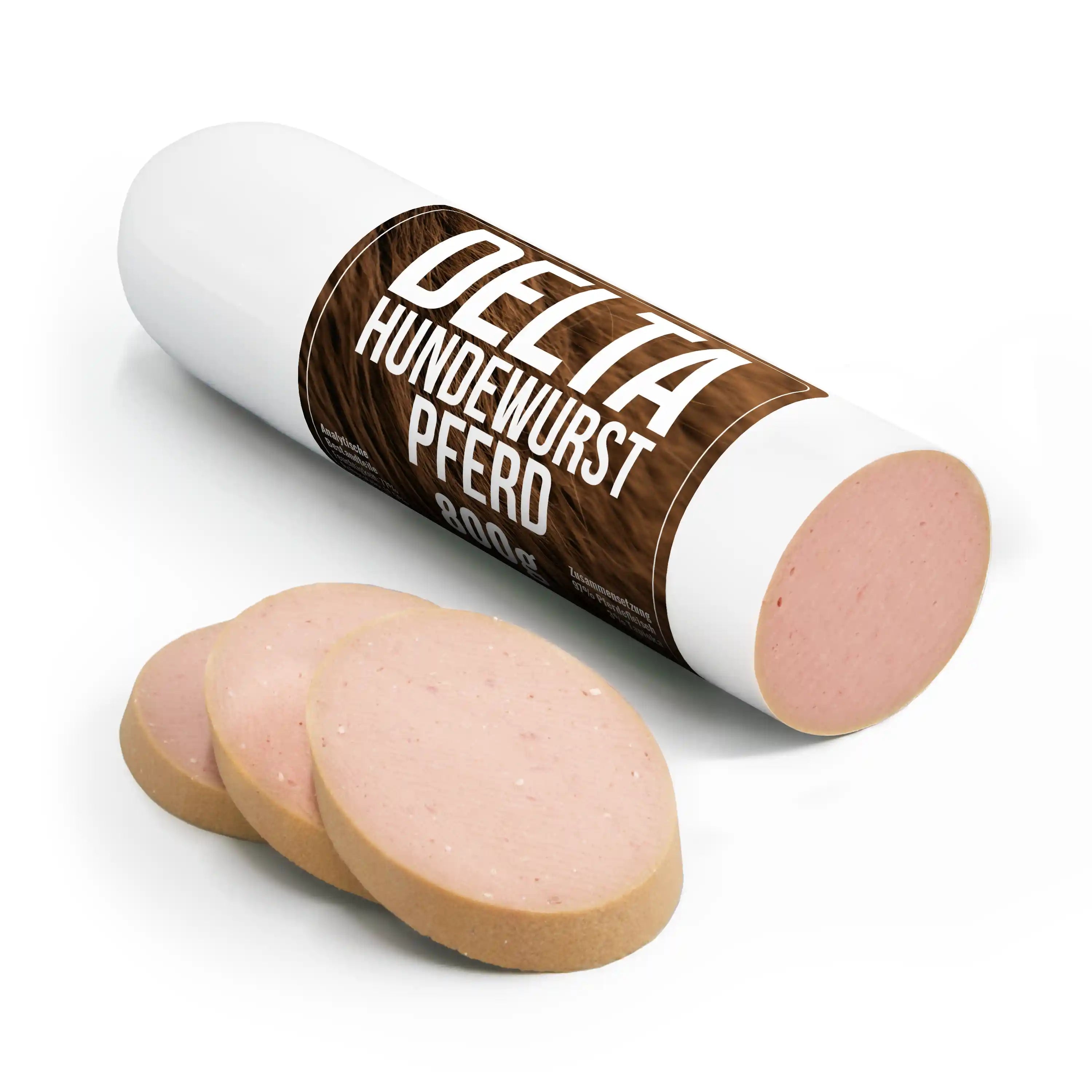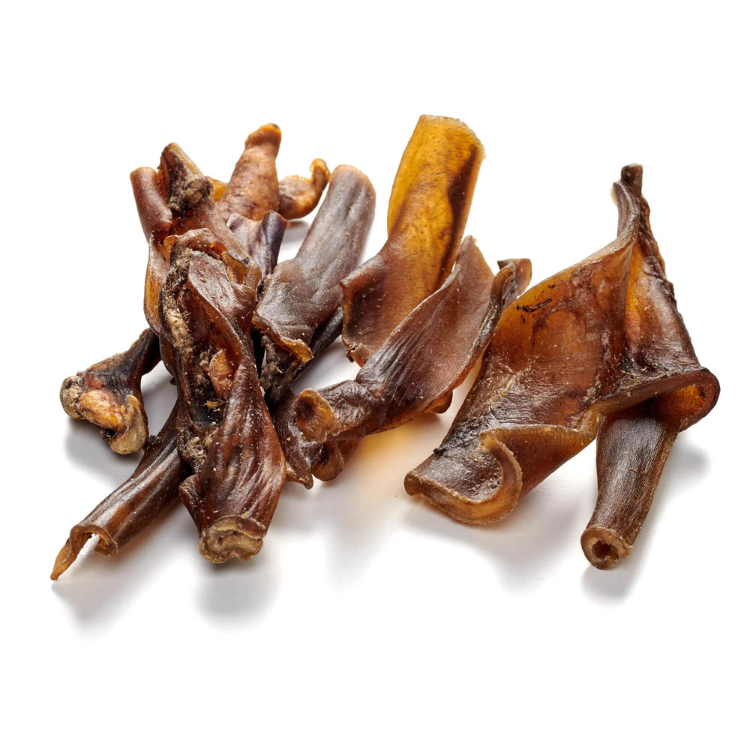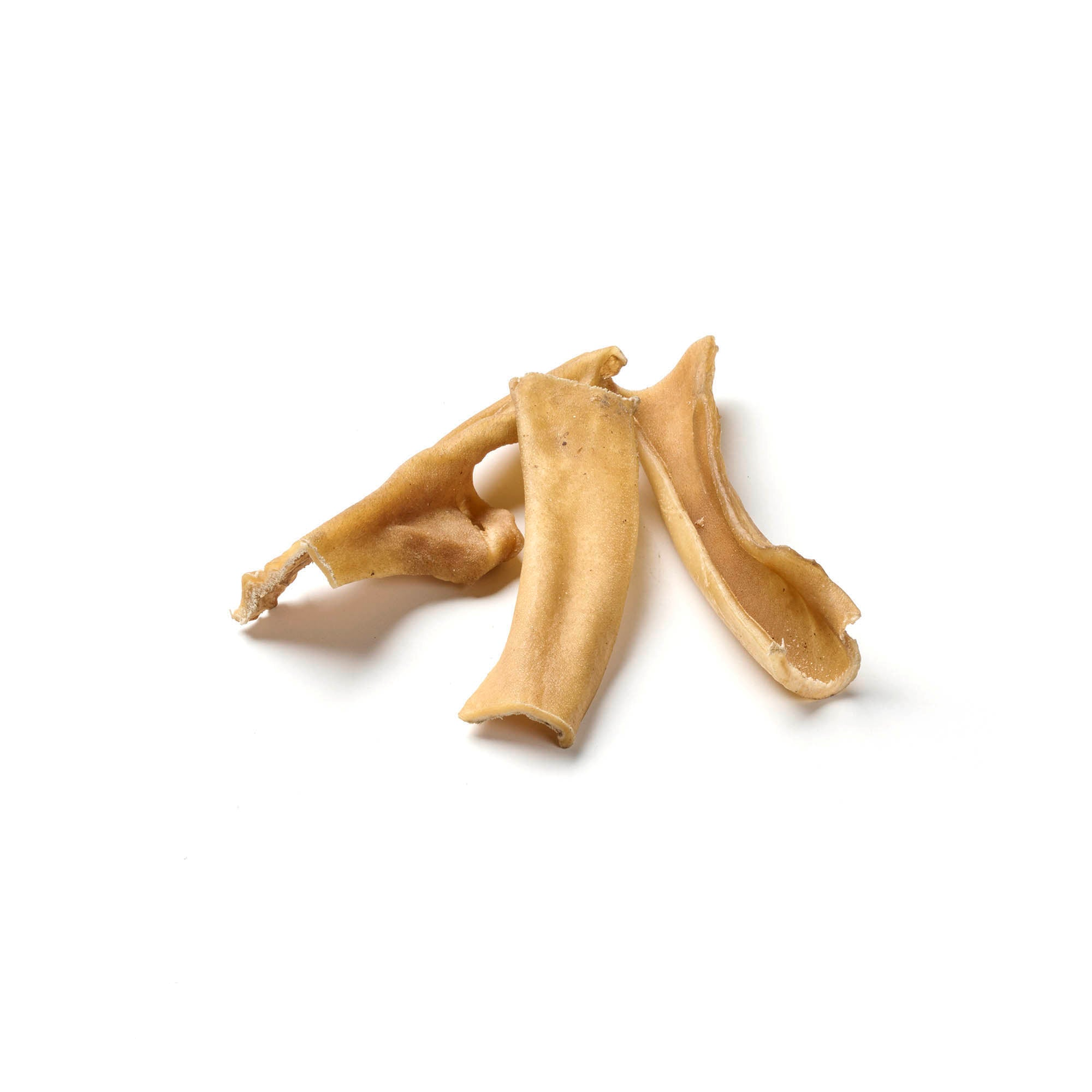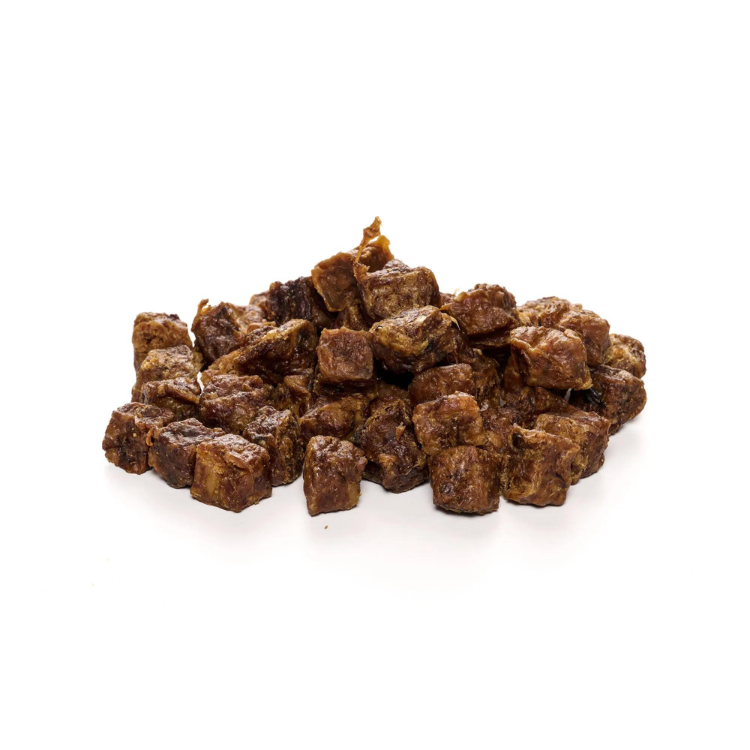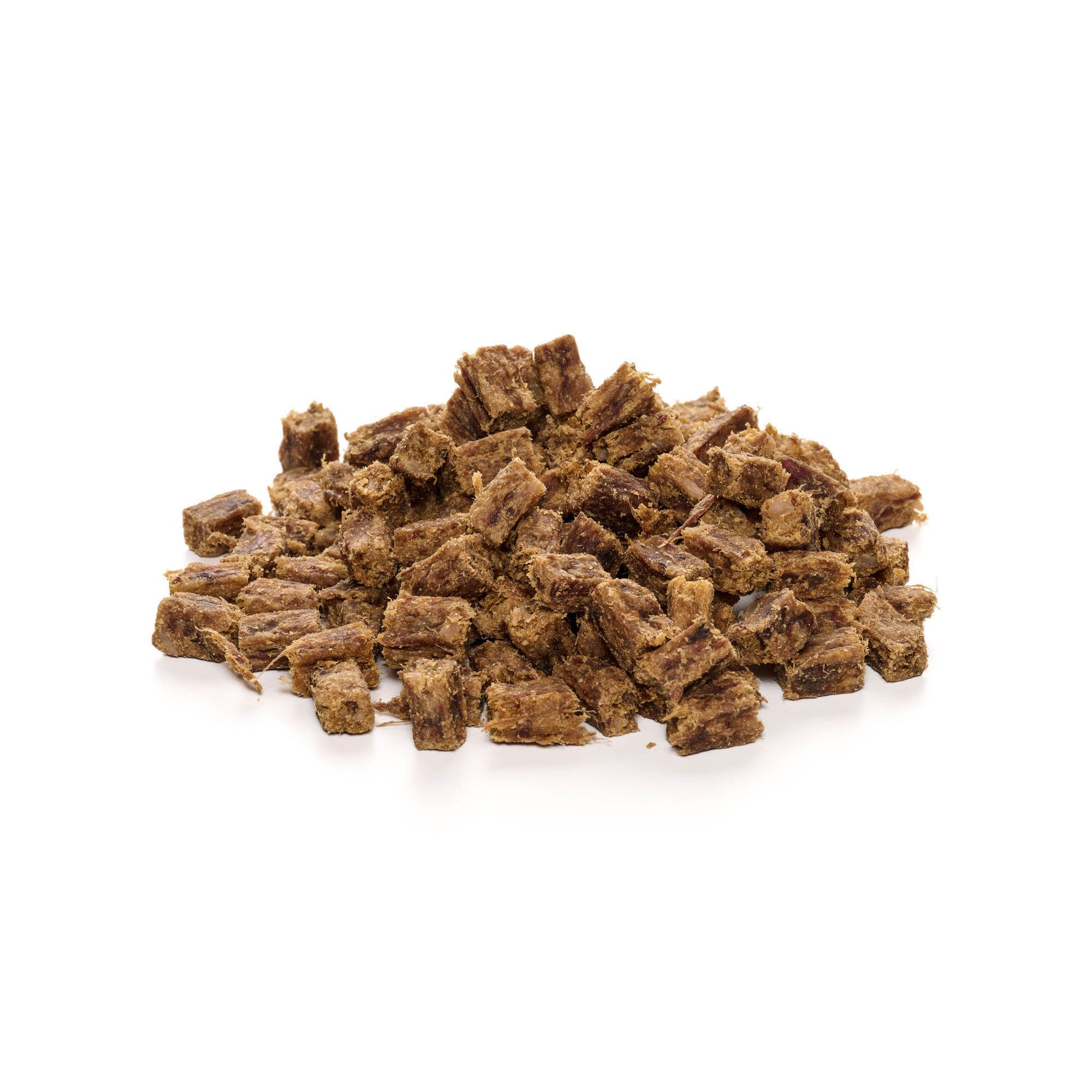
Cold Pressed Dog Food - What you need to know
Share
Dog food comes in many different forms. There are always new types of food that make many dog lovers doubt what is best for their own dog. In the end, no one can take this decision away from you. But so that you have a basis for this decision, we will explain to you here what cold-pressed dog food is.
Cold pressed dog food
How is cold pressed dog food made and how does it differ from regular dry food? What advantages or disadvantages does it bring? Find out here!
Contents: Cold-pressed dog food - What you need to know
- What is cold pressed dog food?
- Advantages & Disadvantages of Cold Pressed Dog Food
- Suitable for all dogs?
- Reduce the risk of gastric torsion?
- Switching to cold-pressed dog food
- Conclusion
Discover the range of dog snacks in our store!
What is cold pressed dog food?
In order to clearly understand the difference between cold-pressed and regular dog food, we first have to look at the different production methods. Regular dog food is called extruded dog food. After all the ingredients have been chopped, they are processed into a dough-like mass. This is then pressed through nozzles under pressure and up to 120 degrees - the well-known pellets are created. It is precisely at this point that the manufacturing processes differ in the heat used, because cold-pressed dog food does not require heat. Hence the term “cold pressed”">The term is a bit misleading because cold-pressed dog food is not processed cold either. This food is also heated to up to 90 degrees.
Advantages & Disadvantages of Cold Pressed Dog Food
The manufacturers promise that the gentle, low-heat production means that more nutrients and vitamins are retained in the food - making the dog food healthier. Unfortunately, the term is often used for marketing purposes and not every dog food labeled cold-pressed is of good quality. Tip: High-quality cold-pressed dog food dissolves quite quickly in water . If it doesn't, that doesn't speak for the quality of workmanship. In fact, cold-pressed dog food is richer in nutrients, vitamins and apparently tastes better to many dogs.> Additional spraying or “coating” with vitamins is not necessary here.>Because cold-pressed dog food breaks down more quickly in the dog's stomach, it is easier to digest. Many dogs with sensitive stomachs therefore tolerate cold-pressed dog food better.> But this advantage puts us directly at a disadvantage. Because the food is not heated to such a high temperature during production, some components are not broken down as well as with extruded dog food.> This is particularly true for types of grain, which are usually not very easy for dogs to use unprocessed. This is particularly noticeable in the dog's intestines. Cold-pressed dog food can also be a disadvantage for dogs with intestinal problems.
Is cold pressed dog food suitable for all dogs?
Even though cold-pressed dog food seems to be just the right thing for many four-legged friends, it is not suitable for every dog. Dogs with intestinal problems or food allergies may have difficulty with cold-pressed dog food.It is also not recommended for pregnant bitches, puppies or old dogs. Extruded dog food is better for these groups.
Discover our selection of premium dog chews!
Reduce the risk of gastric torsion?
It is believed that cold-pressed dog food reduces the risk of potentially fatal stomach upset in dogs because it dissolves more quickly in the stomach than conventional dog food. Unfortunately, what sounds conclusive at first has not yet been scientifically proven.
There are even voices that suspect the opposite effect. Because if the muscles in the stomach are no longer used as usual, they atrophy. This could increase the risk of stomach upset again. At this point, all we know is that we don't know enough. In any case, it cannot be assumed that the risk of gastric torsion decreases. Therefore, the known breaks before and after meals should be observed as usual.
Switching to cold-pressed dog food
Provided your four-legged friend does not suffer from stomach or intestinal problems, switching should not cause any problems. To be on the safe side, however, the change should not happen overnight. A smooth transition makes it much easier for your dog to cope with the change.It's best to mix the two types of food at the beginning and gradually reduce the part that you don't want to eat in the future.
Conclusion
Cold-pressed dog food is not always the better choice for your four-legged friend. The demands of our dogs are as individual as the four-legged friends themselves and so you always have to decide individually which type of food is the best choice in your own case.
But now you know the difference between extruded and cold-pressed dog food - the best way to decide for yourself. Watch your dog carefully and pay attention to what is good for him or not. Only then can you make the right choice.
And remember, if you're unsure, it's okay to ask a veterinarian or canine nutritionist for advice.
High-quality dog chews for your faithful companion can be found here!

